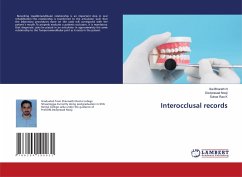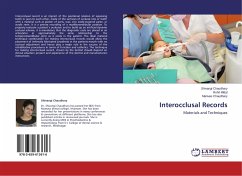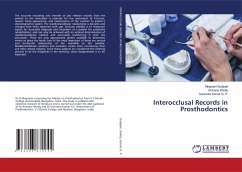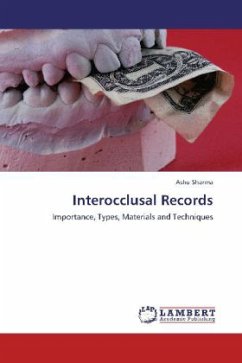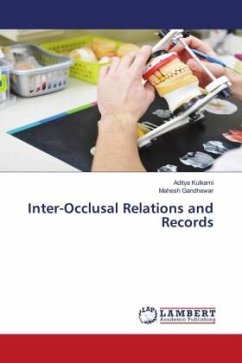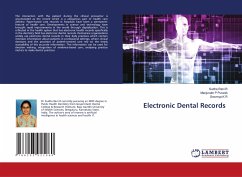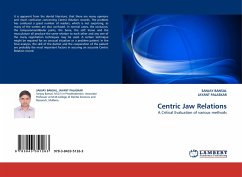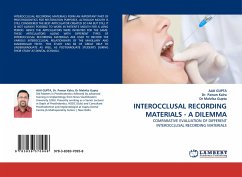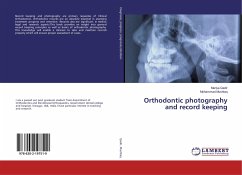
Interocclusal Relations & Records
Versandkostenfrei!
Versandfertig in 6-10 Tagen
33,99 €
inkl. MwSt.

PAYBACK Punkte
17 °P sammeln!
To achieve a successful prosthesis it is important to achieve harmony between the maxillomandibular relationship and anatomy of patient. This relationship is not simple opening or closing, but a complex relationship which exists in 3 dimensions. Variations may occur in any direction - vertical, anteroposterior, or mediolateral. Thus, it is essential to record this relationship with the least possible error to obtain a successful prosthesis. However when relating the maxillary and mandibular dental casts, the ultimate accuracy depends on accuracy and dimensional stability of the material and th...
To achieve a successful prosthesis it is important to achieve harmony between the maxillomandibular relationship and anatomy of patient. This relationship is not simple opening or closing, but a complex relationship which exists in 3 dimensions. Variations may occur in any direction - vertical, anteroposterior, or mediolateral. Thus, it is essential to record this relationship with the least possible error to obtain a successful prosthesis. However when relating the maxillary and mandibular dental casts, the ultimate accuracy depends on accuracy and dimensional stability of the material and the technique used to record the maxillomandibular relationship. To properly evaluate a patient's occlusion and to build up an artificial dynamic occlusal scheme, it is mandatory that the diagnostic casts and the final casts are placed in an articulator in approximately the same relationship to the temporomandibular joint as it exists in the patient. The ideal material-technique combination for making interocclusal records would allow the placement of indirectly fabricated prostheses in the patient's mouth with no occlusal adjustment and hence play a major role in the successful rehabilitation.




